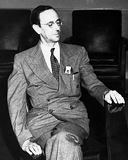Neutron

Along with the proton, the neutron is one of the building blocks of the atomic nucleus. The mass is 1.67493×10-27 kg. The neutron is electrically neutral, hence its name. A free neutron is not stable, but decays with a half-life of 10.2 minutes.
History
In 1920, the New Zealand physicist Ernest Rutherford, first baron of Nelson (1871 – 1937) suggested that the nucleus consisted of positive protons and neutrally charged particles, possibly being a proton and an electron bound in some way. A year later, the American chemist William Draper Harkins (1873 – 1951) first named the hypothetical particle a neutron. The existence of the neutron was first demonstrated in 1932 by the English physicist James Chadwick (1891 – 1974).
Related concepts
| Last modified: | 10 April 2024 10.51 a.m. |
View this page in: Nederlands
